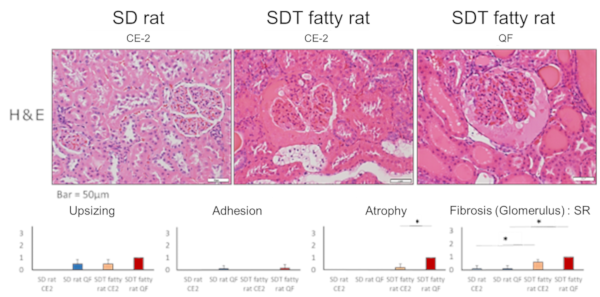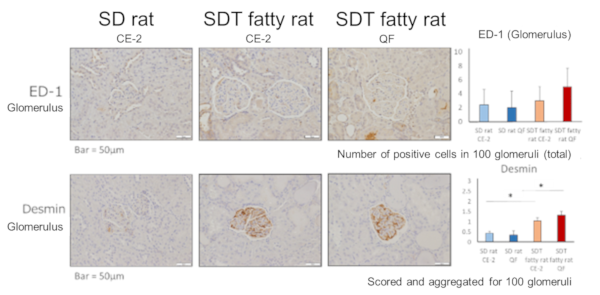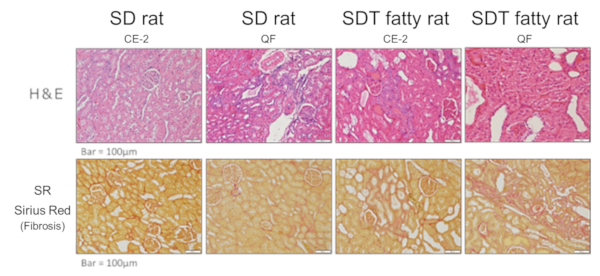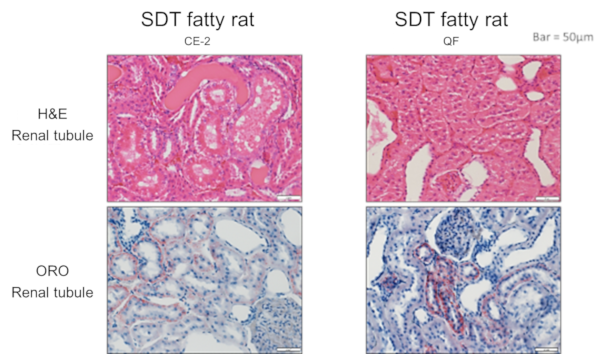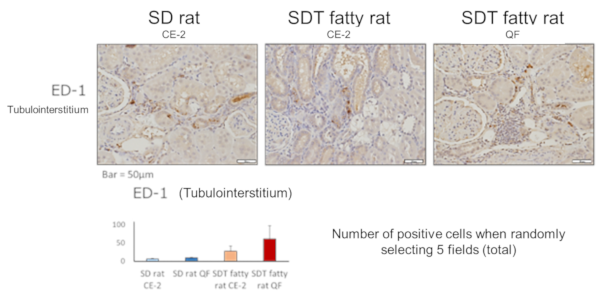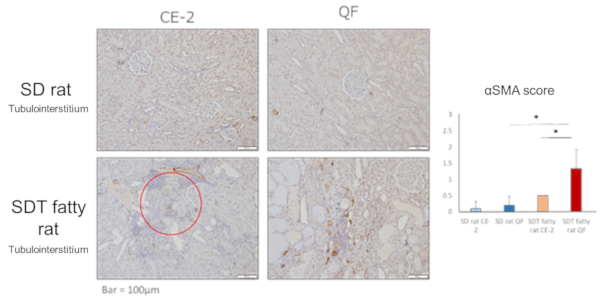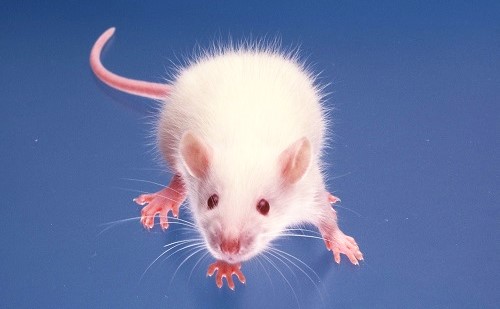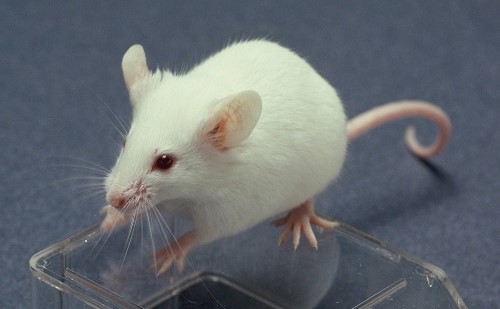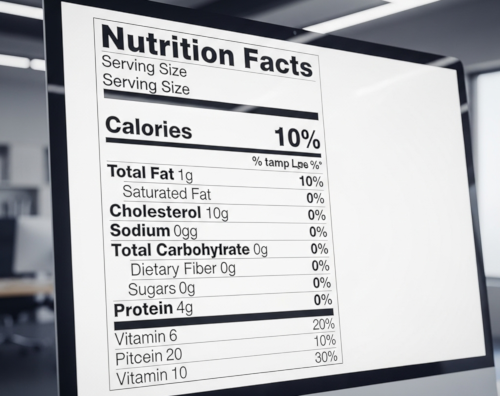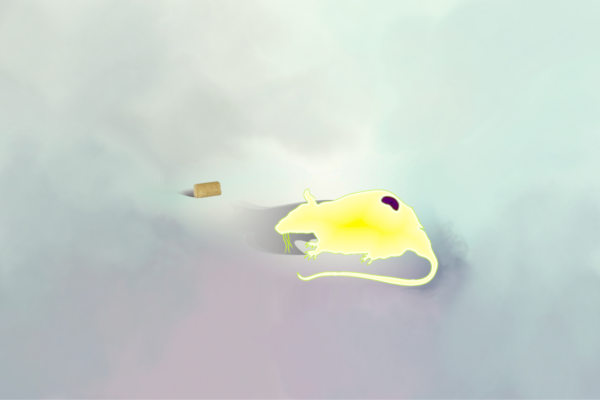
High sucrose/high fat diet (Quick Fat; QF) load. Obese type 2 diabetes model SDT fatty rats show signs of Diabetic Kidney Disease (DKD) development at 28 weeks of age, showing characteristics as a useful DKD model.
It is extremely important to create a diabetes model that allows early analysis of severe renal lesions.
SDT fatty rats fed a high-sucrose/high-fat diet (Quick Fat: QF) exhibited developed DKD pathology at 28 weeks of age. In the following, we will introduce the results of a study on the promotion of renal lesions in SDT fatty rats by QF loading.
If you wish to evaluate drugs in diabetic kidney disease using experimental animals, please consider using SDT fatty rats.
Method
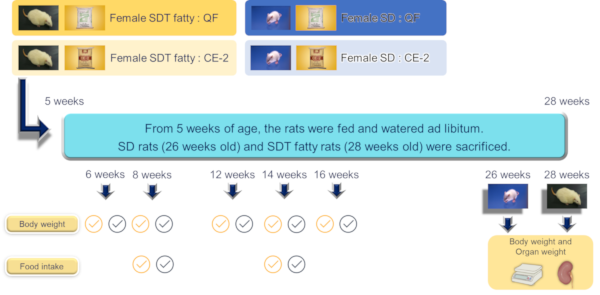
Material and Method
- Animal:
Male SDT fatty/Jcl
Male Jcl:SD
- Diets:
CE-2 (crude fat: 4.60%, energy:340.2kcal)
Quick Fat (QF) (crude fat: 14.35%, energy: 411.15kcal)
- From 5 weeks of age, the rats were fed and watered ad libitum.
SD rats (26 weeks old) and SDT fatty rats (28 weeks old) were sacrificed.
- Blood biochemistry, Gene expression analysis, Histopathological findings
| Animls | Feed | Number of samples | The end of the studie |
| Jcl:SD | CE-2 | 5 | 26 weeks |
| Jcl:SD | QF | 5 | 26 weeks |
| SDT fatty/Jcl | CE-2 | 5 | 28 weeks |
| SDT fatty/Jcl | QF | 3( 2 rats died in breeding ) | 28 weeks |
Result
Body weight, Food intake

Body weight and Organ weight
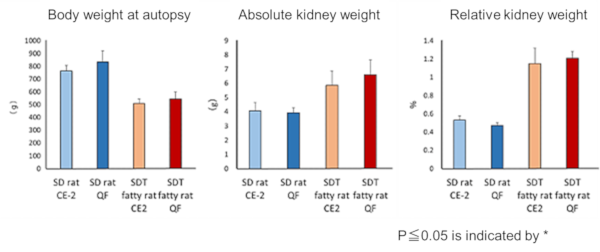
Blood biochemistry
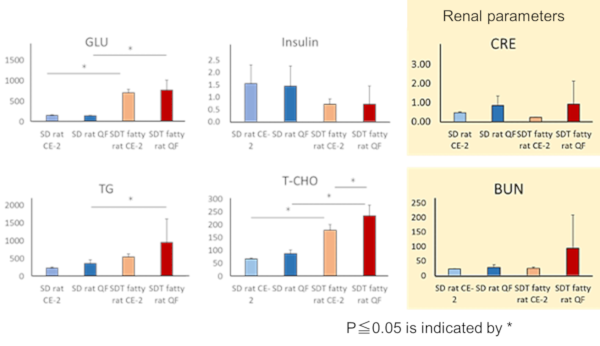
Gene expression findings (Organs)
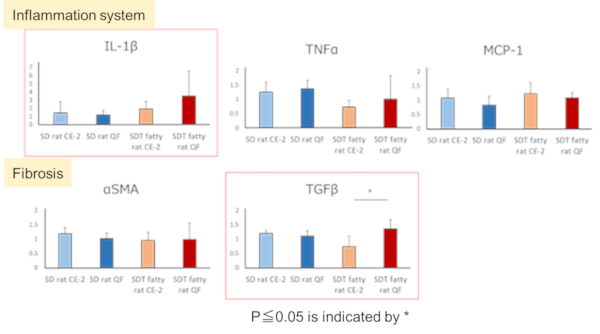
Histopathological assessment criteria
| Histopathological evaluation criteria | |||
| Grade | Percentage showing lesions | Score | |
| - | None | 0 | 0 |
| ± | Very mild | 1-5 | 0.5 |
| 1+ | Mild | 6-30 | 1 |
| 2+ | Moderate | 30-60 | 2 |
| 3+ | Severe | 61 | 3 |
Histopathological findings (Glomerulus)
ED-1/Desmin immunohistochemical staining (Glomerulus)
Histopathological findings (Renal tubule / Tubular interstitium)
Histopathological findings (Tubule / Tubulointerstitial score)
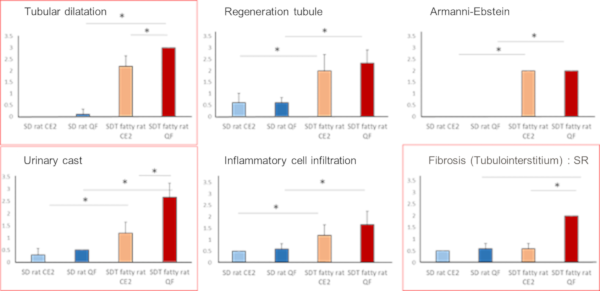
Oil Red O staining (Tubule / Tubular interstitium)
ED-1 immunohistochemical staining (Tubule / Tubular interstitium)
αSMA immunohistochemical staining (renal tubule/tubular interstitium)
Result
Food intake remained higher in the CE-2 group than in the QF group during the experimental period, but body weight remained higher in the QF group than in the CE-2 group. No difference was observed in blood glucose transition.
In the renal histopathology, in the CE-2 group, glomerular enlargement, mesangial hyperplasia, and atrophy, urinary cast formation in the renal tubules, and an increase in inflammatory cell infiltration were observed to a slight extent, and dilation and regeneration of the renal tubules were observed, with moderate Armani-Ebstein lesions.
The QF group developed these lesions, especially dilatation of renal tubules and enhancement of urinary casts. In addition, changes suggestive of lipid droplets were also observed in some glomeruli and urinary casts in the QF group.
Discussion/Conclusion
T-CHO in the blood of SDT fatty rats was significantly increased in the QF group. In the same group, renal tubular dilation, urinary casts, and tubulointerstitial fibrosis were significantly increased.

SDT fatty rat with QF feeding has potential as a new nephropathy model with diabetes
Inquiry
If you have any question, please feel free to contact us from below.


